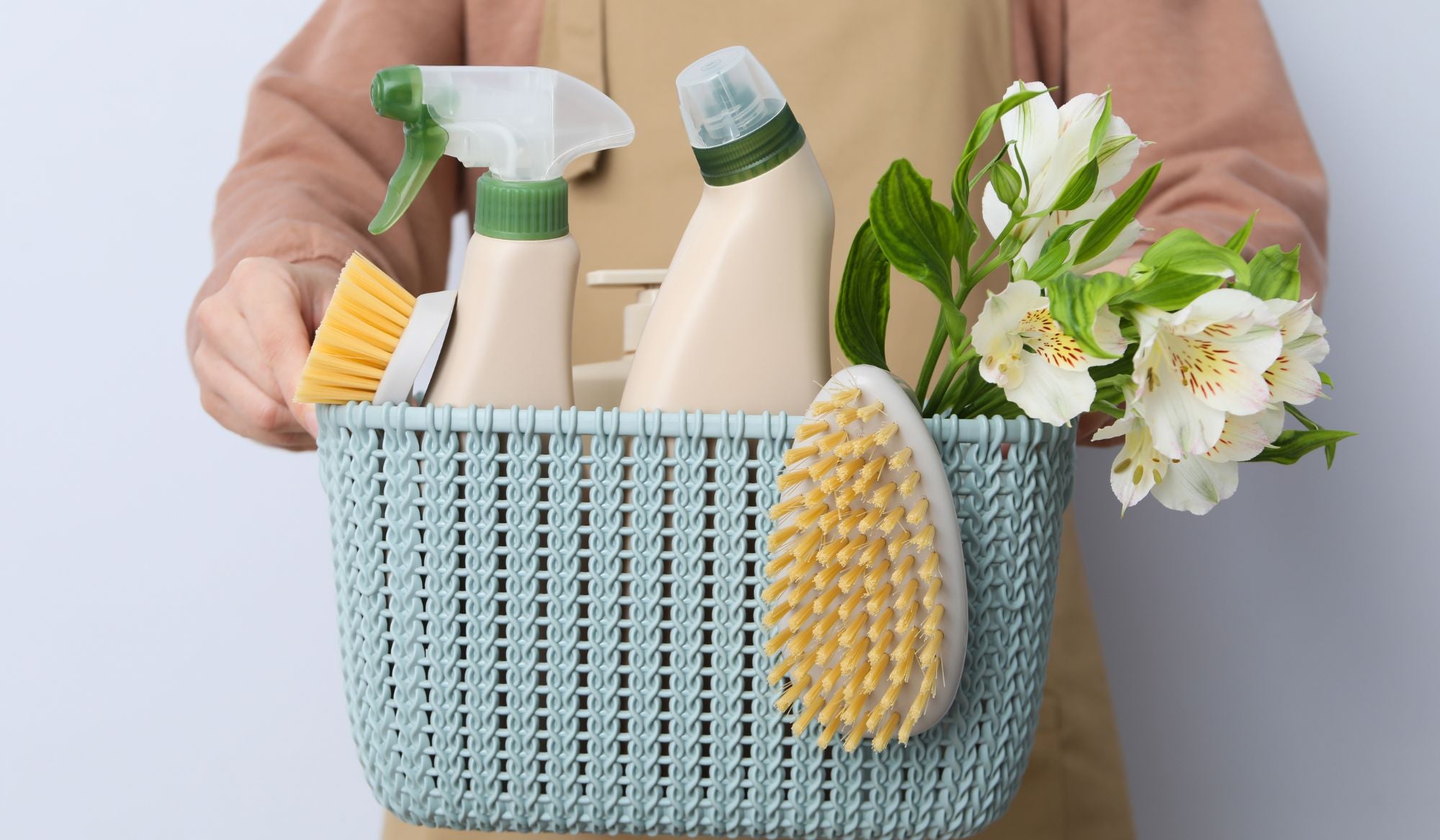Our Office: 4100 32nd Ave. S. Fargo, ND 58104
Spring Cleaning, Safety, & Maintenance Checklist

KITCHEN
____ Clean refrigerator coils. Roll your refrigerator away from the wall and use a vacuum hose to clear the dirt and dust from the coils.
____ Check the rubber gasket along the edge of the opening of your fridge to ensure that the door seals tightly when shut.
____ Cook outside. On warmer spring days, keep the heat out of your home by using an outdoor grill instead of an indoor oven.
____ If you’re growing glaciers in your deep freeze, you’ll use more energy to keep the internal temperature low, so defrost that guy.
LIVING SPACES
____ With more light coming in windows later in the day, consider the best utilization of your space lighting.
____ Turn off the TV, computer, and lights before heading outside to enjoy the spring weather and extra daylight.
____ Set your ceiling fan direction to rotate counterclockwise for the summer. Setting your ceiling fan counterclockwise pushes air down and creates a breeze that helps keep you cool. Turn off ceiling fans when not in the room. Ceiling fans help you feel cooler, but do not cool the room.
____ Open windows in the late spring when temperatures are mild. If it’s warmer during the day, open the windows in the evening and close them during the day.
LAUNDRY
____ Clean the exterior exhaust vent for your clothes dryer.
____ Cleaning your lint trap regularly helps improve the efficiency of your dryer. Remember to empty it after every drying cycle to cut down on drying time and save energy.
____ If you wash on hot, you’re dumping water and money down the drain. Reserve warm and hot settings for heavily soiled loads.
BATHROOM
____ When replacing an older, inefficient showerhead, look for the WaterSense label on showerheads, faucets, faucet accessories, and toilets to help you identify models that save water and perform well.
THROUGHOUT HOME
____ While cleaning, note any AC adaptors and battery chargers plugged in but not in use and unplug them.
____ Dust off electronics, light bulbs, and vents for efficient use of energy.
____ Change incandescent and compact fluorescent bulbs to more efficient LEDs.
____ Change batteries in smoke detectors (yearly) and make sure units are free of dust.
____ Check the more common filters in a home, such as in-sink water dispensers, vacuum cleaners, whole-house air filters, and room and central air conditioners. Some filters need to be replaced outright, but some are washable/reusable.
OUTSIDE
____ Consider putting up (and using) a clothesline.
____ Clean lawn debris from around your outside HVAC equipment.
____ Sealing cracks and openings in your home with low-cost caulk keeps unconditioned air out and cash in your wallet.
____ Trimming trees and bushes away from your house will help to discourage the growth of mold and mildew, as well as prolong the life of your siding and roof.
____ Seal gaps and cracks around your windows and doors with caulk or weatherstrips to help keep your home comfortable year-round and reduce your energy
use.
____ According to the USDA, a tree-row windbreak, when planted properly, can reduce heat loss in your home by 10%, possibly even as much as 25%.
____ Well-placed shade trees can reduce the radiant heat of the sun on your home’s exterior and even shade the interior, reducing energy costs.
MECHANICAL
____ Use the change of season as a reminder to replace your furnace filter regularly.
____ Clean your air conditioner or heat pump’s condensor coil annually to ensure optimal system performance.
____ Turning down the water heater’s temperature to the warm setting (120°F) can help reduce your energy consumption.
____ If your furnace is old and inefficient or is on its last legs, it may be time to consider a new, more energy-efficient furnace.
____ Setting a programmable thermostat to a higher setting when you are not at home can help reduce your energy costs by approximately 10%.
